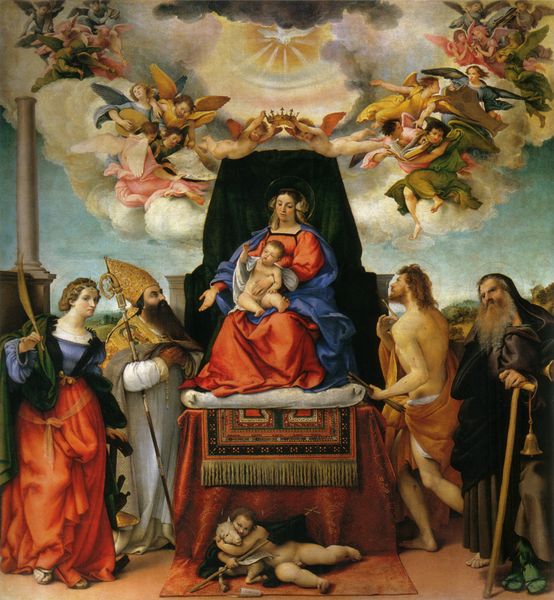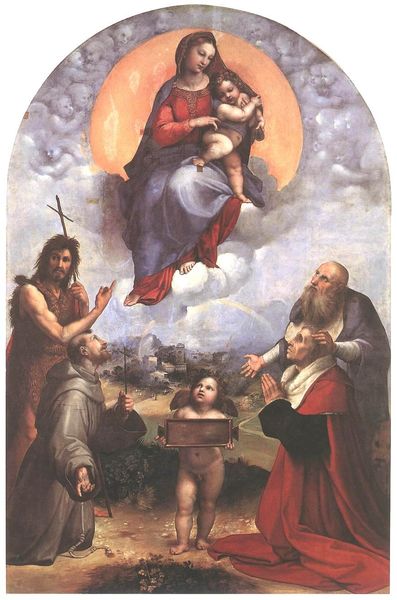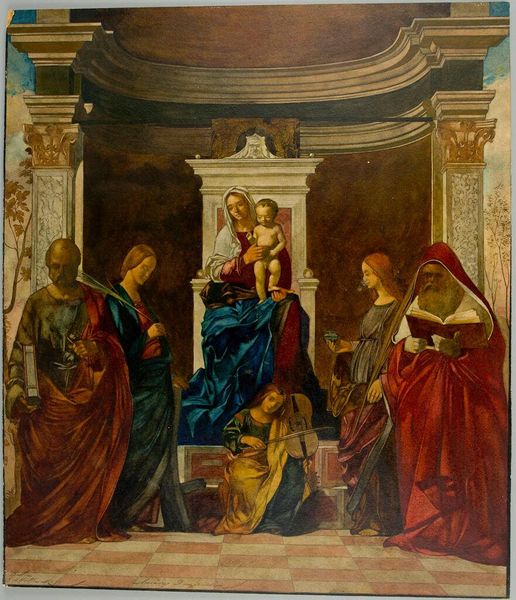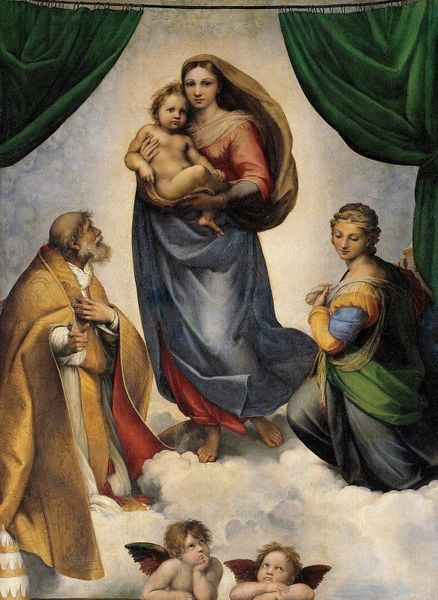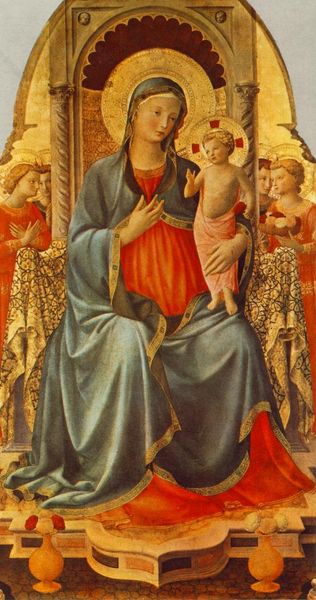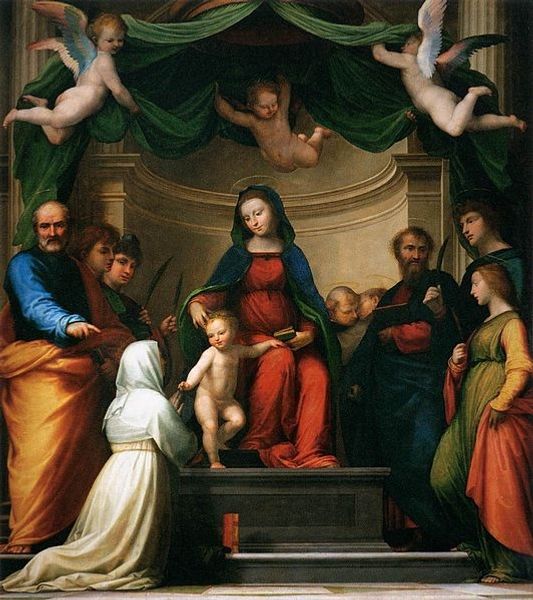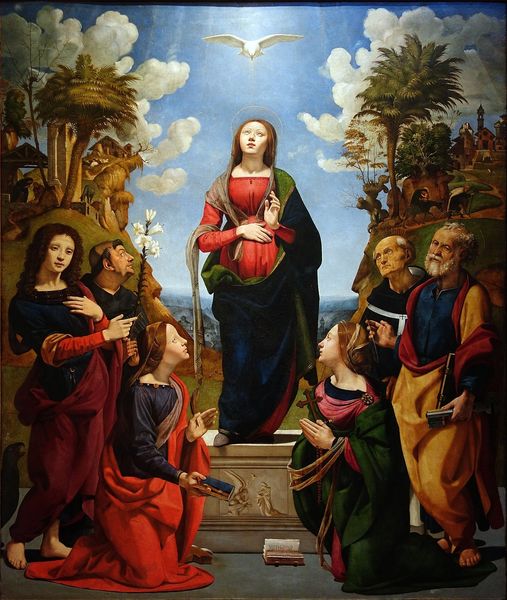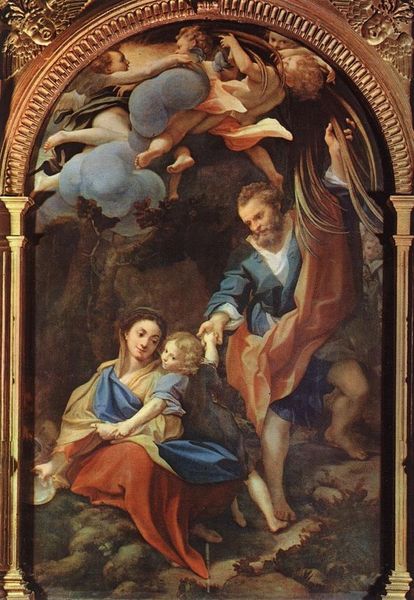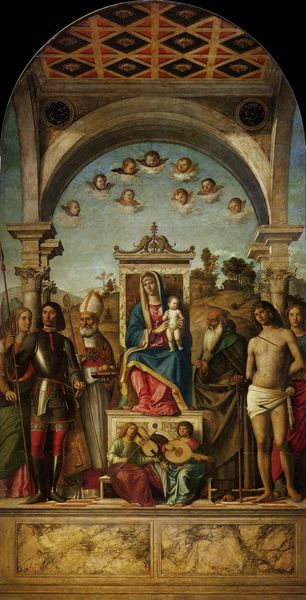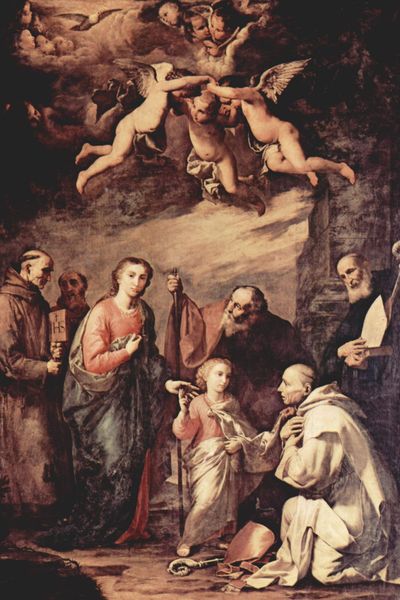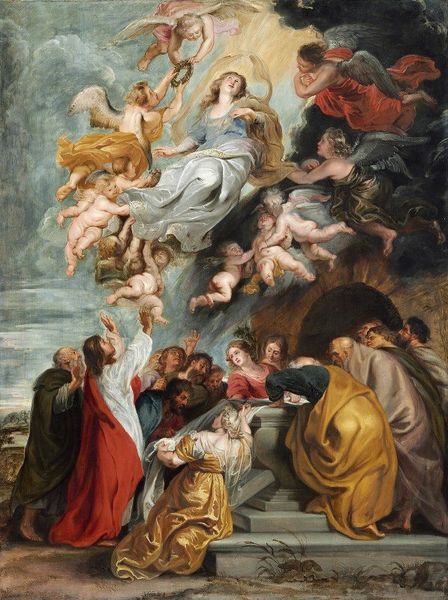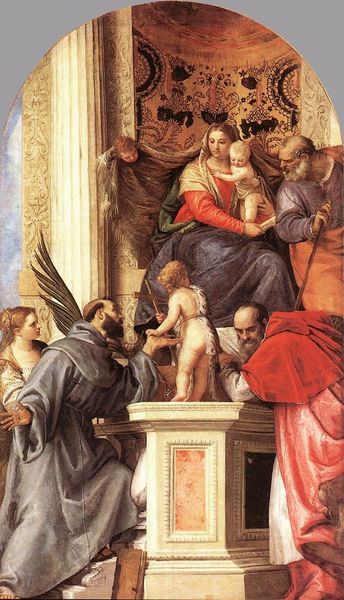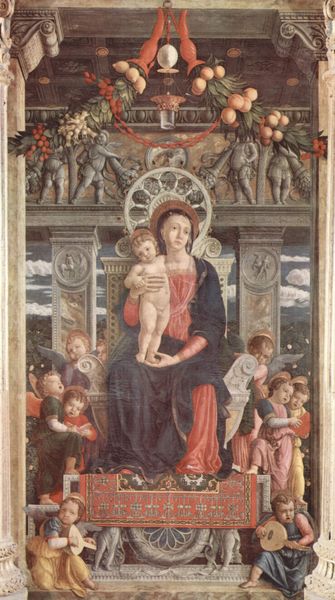
oil-paint
#
portrait
#
high-renaissance
#
oil-paint
#
figuration
#
oil painting
#
jesus-christ
#
christianity
#
history-painting
#
italian-renaissance
#
virgin-mary
#
christ
Dimensions: 299 x 245 cm
Copyright: Public domain
Curator: Standing before us is Correggio's "Madonna and Child with Saint Francis," an oil painting dating back to 1514, a gem from the High Renaissance. Editor: It’s… a bit saccharine for my taste at first glance, almost cloying with the sheer volume of cherubic figures floating around the Virgin Mary. There’s an idealized sentimentality radiating off of it. Curator: Correggio's position during the Italian Renaissance gave him access to a network of religious institutions and wealthy patrons that fueled the proliferation of imagery—these "sweet" Madonnas, like this, spoke to certain demographics and cultivated particular forms of religious engagement in 16th century society. Editor: I see your point. It's about curating specific reactions, not necessarily religious experience as spiritual awakening, but rather an embrace of orthodoxy. Tell me more about the painting itself though, what details underscore this carefully designed intention? Curator: Observe the soft, sfumato technique— the figures seemingly dissolving into the background and each other creating a harmonious but not necessarily earthly scene. Saint Francis, down below to the left, appears humbled but devout with a delicate offering and reverential glance. This type of image often fulfilled multiple social purposes, solidifying status of religious institutions, and offering viewers moral lessons of humility and obedience. Editor: That visual choreography between classes, with those looking "up" to authority, strikes me. Then, these are not just devotional figures; they're components in an assertion of power relations, softened with ethereal glow and idealized babies to appear benevolent. Do we see an attempt by the establishment to control access and experiences by mediating these interactions? Curator: Yes, and Correggio excelled at leveraging visual elements that aligned with the Church’s didactic missions, especially post-Reformation. However, his art wasn't devoid of innovation, the very act of merging earthly and heavenly realms as we see, provided space for imagination. Editor: I find it's crucial to continually reassess these classic images to ensure a critical examination of their roles, rather than passively accepting their beauty as timeless truths. Revisiting Correggio forces us to ask: who are these images really for, and whose voices are left out of the "heavenly" chorus? Curator: I appreciate the lens you bring to this, reminding us how the visual language of power can hide in plain sight. Editor: Absolutely. And acknowledging the nuances, we help prevent repeating harmful historical power structures while creating opportunities to redefine what sacred representation may be in our time.
Comments
No comments
Be the first to comment and join the conversation on the ultimate creative platform.
